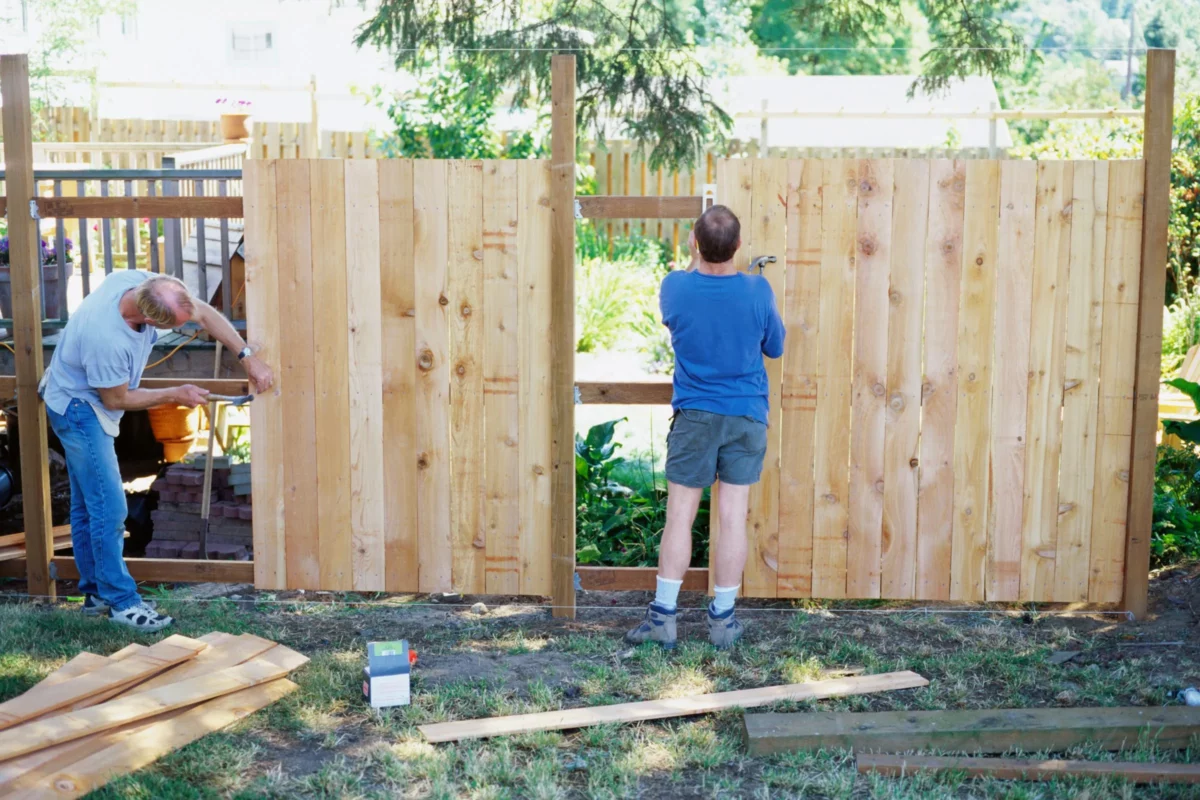Is it Hard to Put Up Your Own Fence?
Mike Clark
on
September 19, 2023

Get Your Free Fence Quote Today!
As a homeowner, you may find yourself facing the decision of whether to hire a fence professional or take on the task of installing a fence yourself. The prospect of putting up your own fence can be both exciting and daunting. On one hand, it offers potential cost savings and the satisfaction of completing a DIY project. On the other hand, it raises questions about the level of difficulty and expertise required. In this post, we will explore the various aspects of installing a fence on your own to help you make an informed decision.
Assessing Your Skills and Resources
Before embarking on any DIY project, it’s crucial to assess your skills and resources. Installing a fence requires careful planning, precise measurements, and proper tools. Ask yourself:
Do I Have the Necessary Tools?
Installing a fence typically calls for tools such as a post-hole digger, shovel, level, tape measure, hammer, saw, and drill. If you already own these tools or have access to them, you’re off to a good start.
Am I Comfortable with Basic Construction Tasks?
Putting up a fence involves tasks such as digging holes for posts, aligning panels or pickets correctly, attaching rails securely, and ensuring everything is level. If you have experience with basic construction tasks or feel confident in your ability to learn them quickly, you may be well-suited for this project.
Can I Dedicate Enough Time?
Installing a fence can be time-consuming. Consider the size of your property and estimate how long it would take you to complete each step of the installation process. Balancing work commitments, family responsibilities, and other projects is essential when deciding whether to tackle this project on your own.
Understanding Local Regulations
Another critical aspect of installing a fence is understanding local regulations and obtaining any necessary permits. Municipalities often have specific rules regarding fence height limits, materials allowed, distance from property lines, and more. Researching these regulations beforehand will help you avoid potential legal issues down the road.
Choosing the Right Fence Materials
Selecting the right fence materials is vital for both functionality and aesthetics. Here are a few popular options:
Wood
Wooden fences offer a classic and timeless appeal. They can be customized to fit various styles, from privacy fences to picket fences. However, wood requires regular maintenance to prevent rotting, warping, or insect damage.
Vinyl
Vinyl fences are known for their durability and low-maintenance qualities. They come in a variety of colors and styles, providing options to match any home design. While vinyl may have a higher upfront cost than wood, it often pays off in terms of longevity and minimal upkeep.
Metal
Metal fences, such as aluminum or wrought iron, are renowned for their strength and security. They require little maintenance and can withstand harsh weather conditions. However, metal fences may not provide as much privacy as other options.
Planning the Installation Process
Proper planning is crucial when installing a fence on your own. Consider the following steps:
Marking Boundaries and Obtaining Utility Information
Before digging any holes, it’s essential to clearly mark your property boundaries to ensure your fence stays within your land. Additionally, contact utility companies to identify any underground lines that might be present along the fence line.
Determining Post Spacing and Digging Holes
The spacing between posts depends on factors such as the style of fence you choose and local regulations. Once determined, dig holes at each post location using a post-hole digger or an auger. Ensure the holes are deep enough to provide stability based on your chosen fence height.
Setting Posts and Installing Panels/Pickets
Set your posts securely by pouring concrete into each hole or using gravel for drainage purposes. Once the posts are set and sturdy, proceed with attaching the panels or pickets according to your fence design. Ensure everything is level and secure as you progress.
Adding Finishing Touches
After installing the main structure of your fence, don’t forget the finishing touches. This may include adding post caps, staining or painting wood fences, or applying any additional treatments to protect against weathering.
Weighing the Pros and Cons
Before deciding whether to install a fence on your own or hire a professional, it’s important to consider the pros and cons:
Pros of Installing Your Own Fence:
- Potential cost savings compared to hiring a professional.
- A sense of accomplishment from completing a DIY project.
- Flexibility in choosing materials, designs, and installation timelines.
Cons of Installing Your Own Fence:
- Time-consuming process, especially for larger properties.
- Requirement for tools and equipment that you may not already own.
- The need for knowledge and expertise in construction tasks.
Conclusion
Installing a fence can be both challenging and rewarding. By assessing your skills and resources, understanding local regulations, selecting suitable materials, and planning the installation process meticulously, you can successfully put up your own fence. However, if you lack the necessary skills or time constraints are an issue, hiring a professional might be a wise decision. Ultimately, finding the right balance between cost savings and peace of mind is key when making this choice.
- Category: Uncategorized

 FREE ESTIMATE NOW
FREE ESTIMATE NOW (770) 396-4200
(770) 396-4200